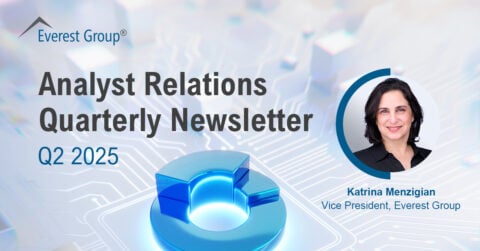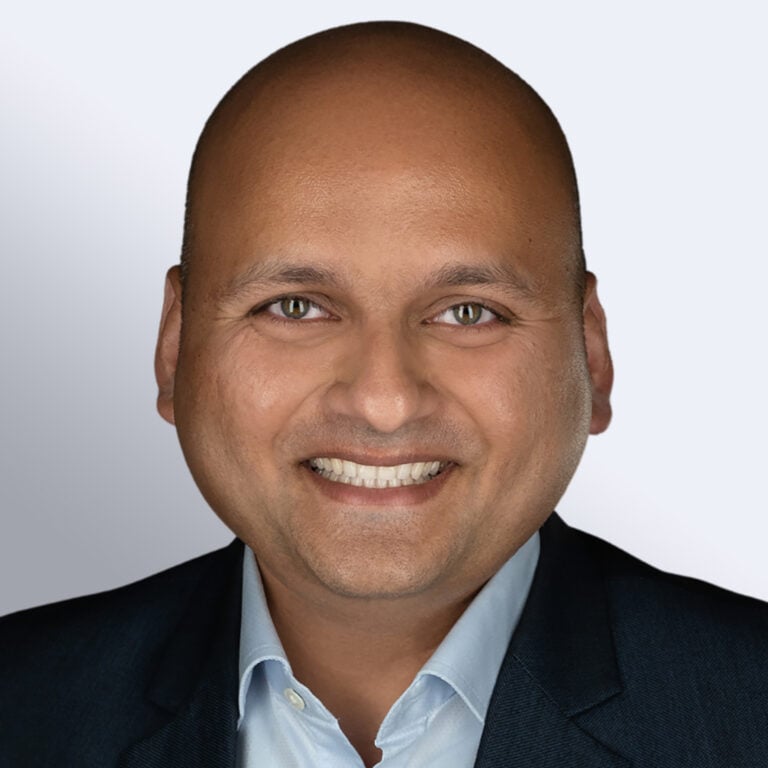
It’s hard to believe that the 2016 HIMSS Annual Conference & Exhibition is upon us! Being held in Las Vegas on February 29 – March 4, it is the largest healthcare IT conference in the world bringing together 40,000+ health IT professionals, clinicians, executives, and vendors. And with more than 1,300 healthcare IT vendors occupying over 1.3 million square feet of space (the equivalent of 22 NFL-sized football fields) in the Sands Expo, it will be easy to get lost physically and in the multitude of discourse and chatter that will be going on.
As I look at the healthcare and life sciences IT space heading into 2016, I expect the following five themes to rule the roost at HIMSS 16:
- Mega mergers, middling impact for providers
Big healthcare client mergers are underway, and they will cause fluctuations in IT services demand. Major IT services clients in the healthcare vertical are pursuing mergers – e.g., Aetna acquiring Humana; Anthem acquiring Cigna; and Centene acquiring Health Net. While awaiting regulatory approvals (which could take until the second half of 2016 or longer) and consummation, these mergers will affect IT services demand growth in this market segment – entailing pull back on awards of new IT services deals, and stalls on previously-planned scope – in turn potentially detracting from revenues previously expected by IT services firms. We have already seen market leaders such as Cognizant raise concerns over possible downward demand pressures arising out of this temporary pause in spending. After merger consummation, a ramp in merger-integration work could enhance consulting demand. Yet longer-term, existing outsourcing revenues from the combined organizations are prone to be truncated. That said, well-positioned IT services firms could capitalize by achieving client merger-induced share gains.
- Will the real patient engagement please stand up?
Patient engagement, population health management, and customized/targeted care have all been doing the rounds in the last couple of years. However, our assessment of the state of patient engagement maturity mandates suggests that most providers lack a coherent strategy. More often than not, care providers conflate ad-hoc and siloed patient-facing initiatives, such as a patient portal or solitary mobile app, as true patient engagement. This couldn’t be farther from the truth. These attempts don’t meaningfully move the needle on patient engagement, and give care providers a false sense of hope and progress. In 2016, health systems and payers will – hopefully – realize that to actualize the patient engagement mandate, they need to constitute a coherent, thought-out strategy that encompasses organizational maturity, culture, multi-pronged initiatives (spanning care management, operational support, internal IT, and omni-channel access), and effective governance mechanisms to keep these disparate moving parts together.
- Data security: keeping healthcare CIOs on their toes
Healthcare industry tailwinds such as big data, BYOD, EHR/EMR, networked devices, mHealth apps, cloud-based technologies, and IoT are adding to the healthcare information security conundrum. There has been a manifold increase in the complexity of managing information assets, specifically Electronic Protected Health Information (ePHI) and IP. The data sharing requirements for the Meaningful Use program and the Affordable Care Act will only compound the security challenges for healthcare organizations. The frequency, severity, and velocity of cyber-attacks have increased, leaving stakeholders shaken in the absence of adequate response and protection systems. Although CIOs often list security as a priority, historically it has not translated into actual meaningful spending on security initiatives. However, we believe now is time for Chief Information Security Officers (CISOs) to take their place in the sun. Per a 2015 survey conducted by Everest Group spanning over 200 senior healthcare IT stakeholders, more than 90 percent view data security as the key IT challenge, higher than any other pressing concern about their IT portfolio.
- Drug pricing – the Goldilocks syndrome to the rescue?
Thanks to Martin Shkreli, concerns over drug prices dominated the public discourse last year. For the uninitiated, Turing Pharmaceuticals, headed by Martin Shkreli, was widely condemned for raising the price of Daraprim, a drug used to treat HIV patients, by 5,000 percent from $13.50 to $750 per pill. Price increases for branded drugs have outpaced inflation every year since 2006. Even generics prices increased by an average of 9 percent in 2014. The federal government is investigating Turing Pharmaceuticals’ and Valeant Pharmaceuticals’ drug pricing strategies. In a U.S. election year, Big Pharma will be under tremendous pressure to lower drug prices, which could potentially affect new innovation funding. Presidential candidates, Democrats and Republicans alike, have drug price proposals, further intensifying the spotlight on the issue.
- 2016 Presidential elections and the fight for universal healthcare
Both parties in the U.S. presidential race have a number of healthcare proposals on the table. With the high-profile tax inversion mergers by pharmaceutical companies, rising medical costs, and high drug prices, healthcare will remain a key issue throughout the political campaign. This battle will stretch to the Congress as well, given the Senate’s recent passage of a bill that would dismantle core elements of the Affordable Care Act. While a full repeal looks unlikely, parts of the act are still under attack, and the mudslinging is likely to continue through 2016.
I look forward to interesting discussions on these and other topics with clients and the broader vendor community during #HIMSS16. If you’re there in person, feel free to contact me!











